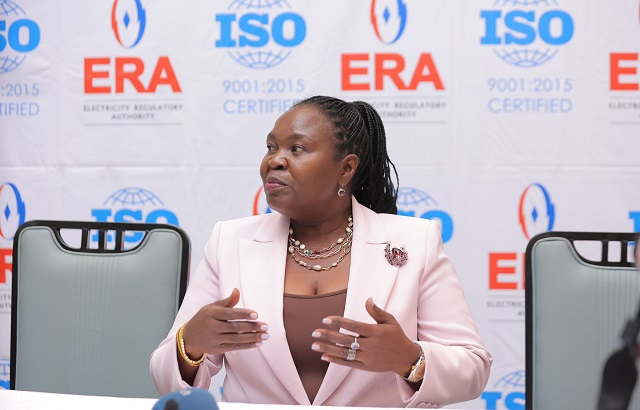Uganda’s long-standing ambition to harness nuclear energy is gaining momentum, with government projections now targeting the year 2031 for the commissioning of the country’s first 1,000 megawatts (MW) from the proposed Buyende Nuclear Power Plant (NPP).
The development follows last year’s selection of Currie Consultants Limited (CCL) to oversee the Resettlement Action Plan (RAP) for the project, located atop Kasaato Hill in Buyanja Sub-county, Buyende District. The Buyende NPP is set to be Uganda’s flagship infrastructure project under the National Development Plan IV.
The country’s nuclear journey began in 2006 following a presidential directive to establish a Nuclear Energy Unit within the Ministry of Energy and Mineral Development (MEMD). Since then, Uganda has made gradual strides towards building a robust legal, institutional, and technical framework for nuclear energy development.
Speaking to the press on Tuesday, the Minister of Energy and Mineral Development, Hon. Ruth Nankabirwa, reaffirmed government’s commitment to delivering the first phase of the Buyende project by 2031.
“By 2031, I would like to see the initial 1,000MW. For the 8,400MW planned in Buyende, we will start with 1,000MW,” said Ms Nankabirwa, emphasizing the need for phased commissioning based on the national grid’s readiness. “We cannot put all the 8,400MW on the grid at once — it would collapse. You have to make sure the off-takers, grid infrastructure, and distribution network are prepared.”
The Buyende plant is one of four projects outlined in Uganda’s 2023 Energy Policy roadmap. Other proposed nuclear power stations include the Nakasongola NPP (7,200MW), Kiruhura NPP (4,800MW), and Lamwo NPP (4,000MW), collectively aiming to contribute to Uganda’s 24,000MW nuclear power goal — part of a broader 52,481MW target for national electricity generation.
Site assessment work for the Buyende NPP recently received a boost with the signing of a contract between the Ugandan government and South Korea’s Korea Hydro and Nuclear Power (KHNP) Company Ltd. The agreement authorizes KHNP to begin on-site evaluation activities, which will inform the project’s technical feasibility, environmental safety, and social safeguards.
“The contract will enable KHNP to go on site in Buyende, after which the real development begins,” said Ms Nankabirwa. “This site evaluation is a critical prerequisite before the full feasibility study is prepared — which will also cover compensation and resettlement planning.”
Under the agreement, at least 30 percent of the contract work is expected to be subcontracted to Ugandan companies. In addition, KHNP will work with MEMD to build local capacity through staff training and knowledge transfer initiatives.
KHNP Vice President, Mr Lim Seung-Yeol, pledged the company’s support, stating, “We hope to become a strong and reliable partner in Uganda’s vision to become a nuclear-operating nation and deliver 24 gigawatts of nuclear power generation capacity.”
This site evaluation contract follows a Memorandum of Understanding (MoU) signed between KHNP and MEMD during the African Nuclear Business Platform Conference held in Kampala in March 2023.
In a related development, the government recently launched a national stakeholder engagement and communication strategy for nuclear energy. The strategy was developed during an expert mission by the International Atomic Energy Agency (IAEA), aimed at aligning Uganda’s efforts with the 19 key infrastructure elements recommended for nuclear power development.
Participants in the IAEA technical cooperation mission included Ms Irena Chatzis, Communication and Stakeholder Engagement Officer at the IAEA, Ms Bellona-Gerard Vittor-Quao of Nuclear Power Ghana, and seasoned stakeholder consultants Ms Kelle Barfield and Mr Javier Farias.
Permanent Secretary of MEMD, Ms Irene Bateebe, underscored the importance of the engagement strategy, stating, “Stakeholder engagement is fundamental to the success of Uganda’s nuclear power programme. This strategy will guide our efforts in building trust, transparency, and national support.”
Government has consistently expressed its commitment to the peaceful use of nuclear science and technology across various sectors, including healthcare, agriculture, industry, water resource management, and electricity generation.




